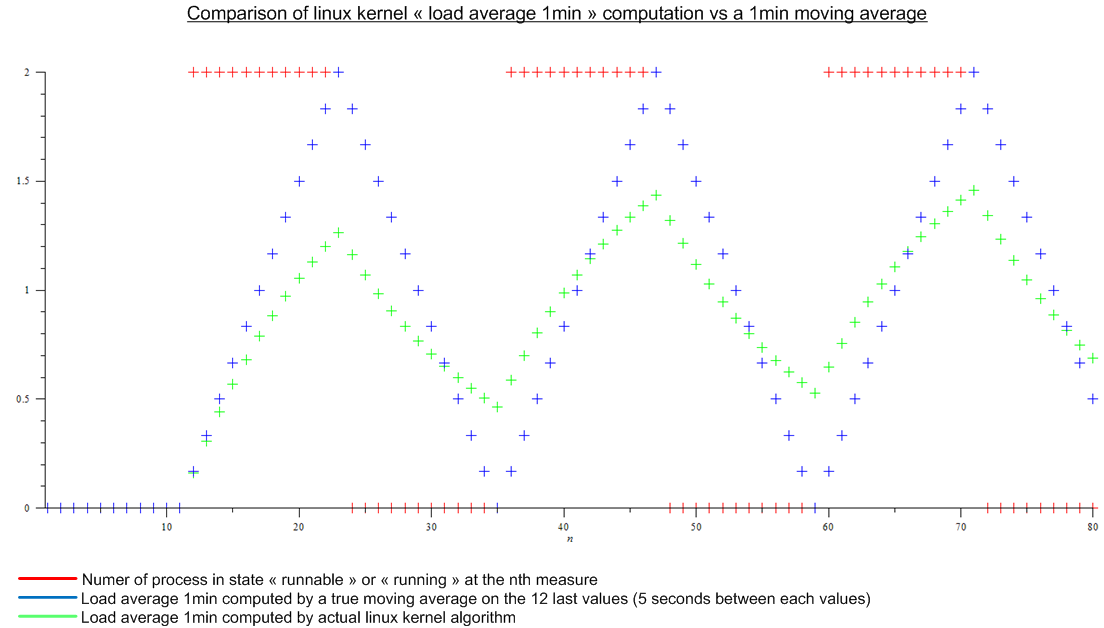Why isn't a straightforward 1/5/15 minute moving average used in Linux load calculation?
30
votes
1
answer
4199
views
Until recently I thought the load average (as shown for example in top) was a moving average on the n last values of the number of process in state "runnable" or "running". And n would have been defined by the "length" of the moving average: since the algorithm to compute load average seems to trigger every 5 sec, n would have been 12 for the 1min load average, 12x5 for the 5 min load average and 12x15 for the 15 min load average.
But then I read this article: http://www.linuxjournal.com/article/9001 . The article is quite old but the same algorithm is implemented today in the Linux kernel. The load average is not a moving average but an algorithm for which I don't know a name. Anyway I made a comparison between the Linux kernel algorithm and a moving average for an imaginary periodic load:
 .
There is a huge difference.
Finally my questions are:
- Why this implementation have been choosen compared to a true moving average, that has a real meaning to anyone ?
- Why everybody speaks about "1min load average" since much more than the last minute is taken into account by the algorithm. (mathematically, all the measure since the boot; in practice, taking into account the round-off error -- still a lot of measures)
.
There is a huge difference.
Finally my questions are:
- Why this implementation have been choosen compared to a true moving average, that has a real meaning to anyone ?
- Why everybody speaks about "1min load average" since much more than the last minute is taken into account by the algorithm. (mathematically, all the measure since the boot; in practice, taking into account the round-off error -- still a lot of measures)
 .
There is a huge difference.
Finally my questions are:
- Why this implementation have been choosen compared to a true moving average, that has a real meaning to anyone ?
- Why everybody speaks about "1min load average" since much more than the last minute is taken into account by the algorithm. (mathematically, all the measure since the boot; in practice, taking into account the round-off error -- still a lot of measures)
.
There is a huge difference.
Finally my questions are:
- Why this implementation have been choosen compared to a true moving average, that has a real meaning to anyone ?
- Why everybody speaks about "1min load average" since much more than the last minute is taken into account by the algorithm. (mathematically, all the measure since the boot; in practice, taking into account the round-off error -- still a lot of measures)
Asked by user368507
(2223 rep)
Mar 8, 2011, 10:34 PM
Last activity: Jan 7, 2017, 02:13 PM
Last activity: Jan 7, 2017, 02:13 PM